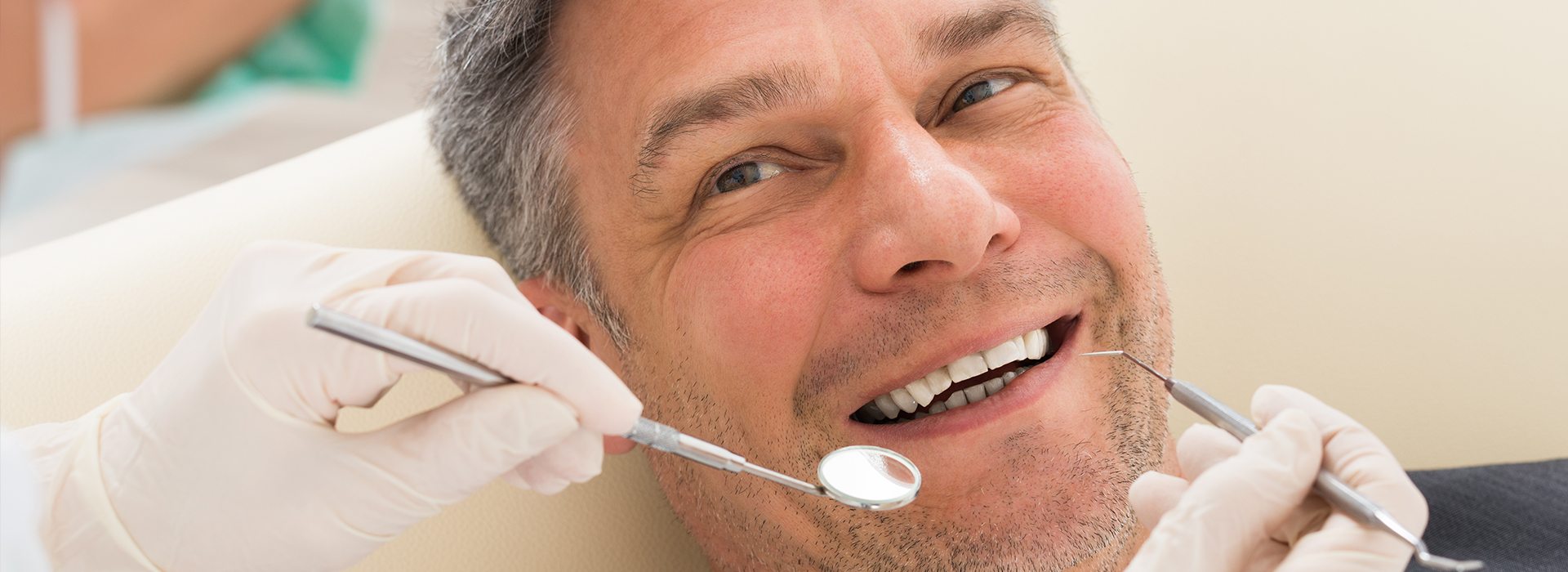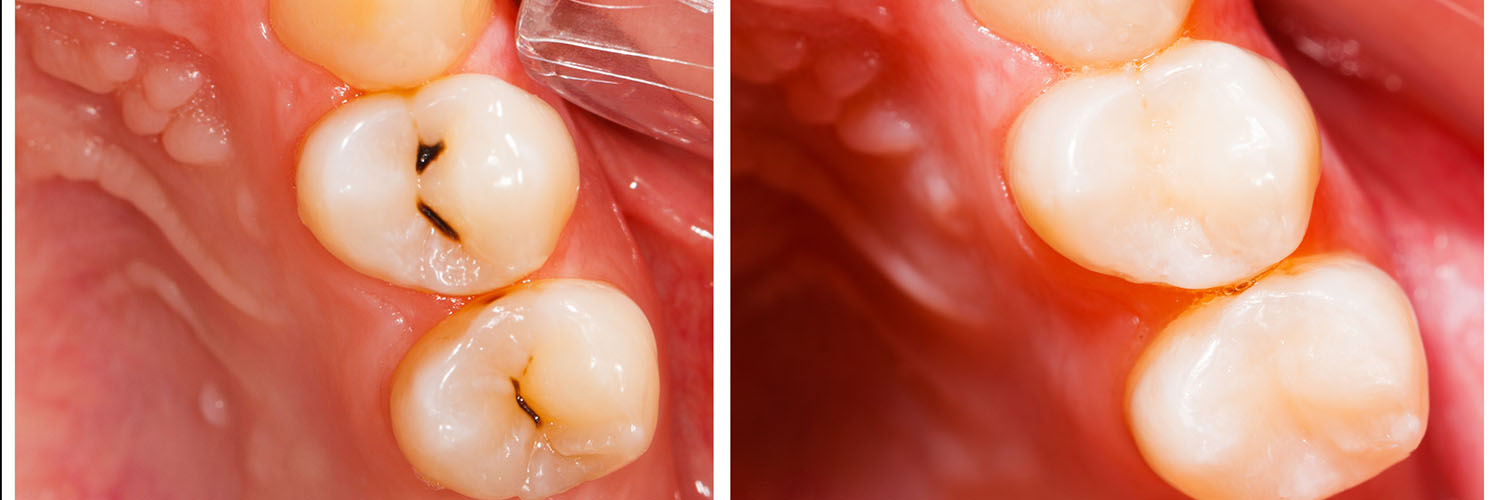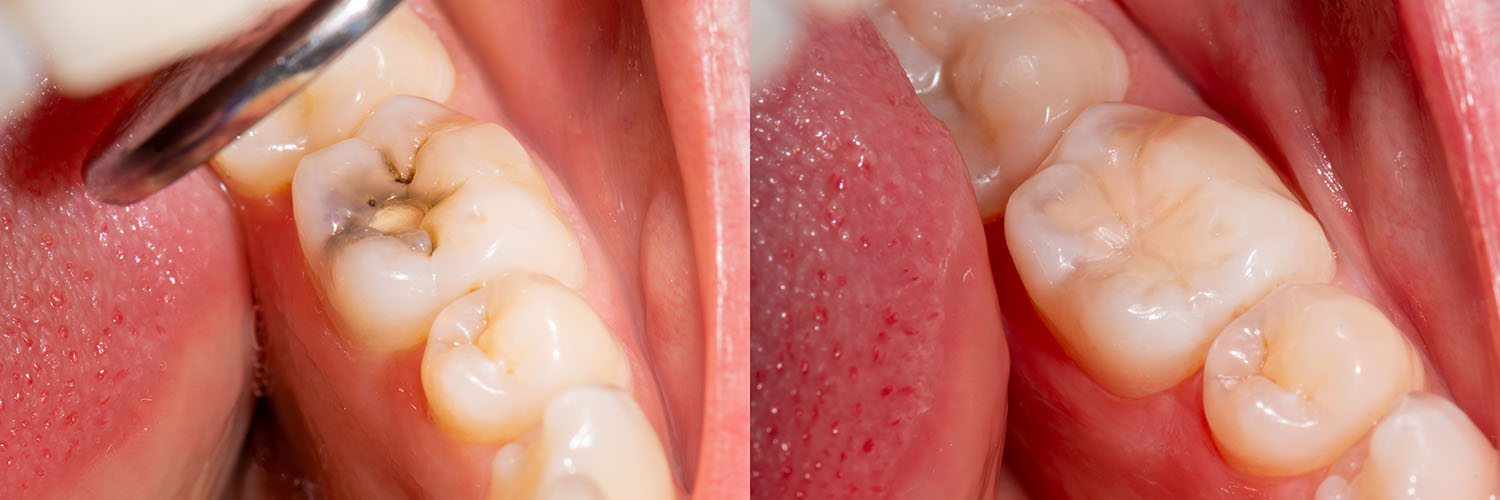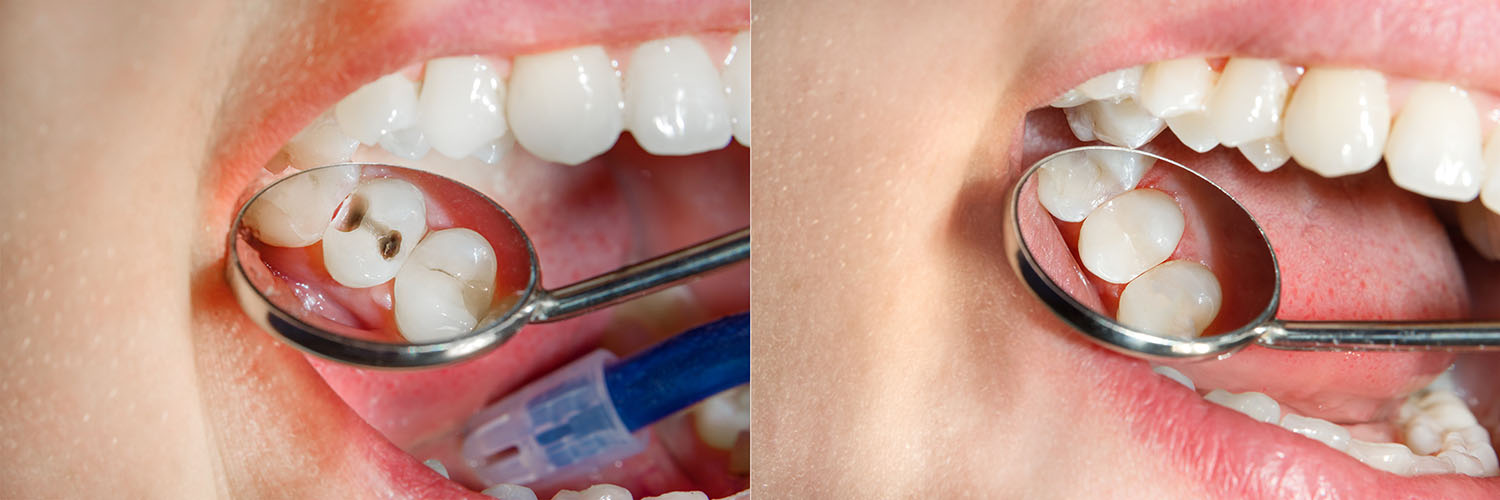
When a tooth has been weakened by decay or minor damage, a filling restores its shape, strength, and ability to function normally. Fillings are designed to replace lost tooth structure, seal the area against further breakdown, and help the tooth withstand the forces of chewing. The goal is conservative repair—remove only what is necessary and rebuild the tooth in a way that blends with the surrounding enamel.
Tooth decay remains common across all ages, so restoring teeth with reliable, predictable techniques is a routine part of dental care. Advances in materials and bonding methods mean many restorations now do more than simply fill a hole: they reinforce and protect the remaining tooth while delivering a natural look. The process is straightforward for most patients and often completed in a single visit.
At the office of Richwood Family Dental, our approach emphasizes minimally invasive treatment and long-term oral health. We evaluate the extent of decay, discuss appropriate material choices, and craft a plan that prioritizes the tooth's strength and the appearance of your smile. Every restoration is placed with careful attention to fit, contour, and function.
Human efforts to repair teeth date back millennia, with archaeological evidence showing rudimentary restorations long ago. Over time, dental materials evolved from natural fillings to metals like gold and, later, the widely used amalgam. These metal restorations offered durability but lacked the aesthetic qualities many patients want today.
More recent developments introduced resin-based composites, ceramics, and adhesive techniques that bond restorations directly to tooth structure. These innovations allow dentists to preserve more healthy enamel and achieve results that match surrounding teeth. Modern choices balance durability, appearance, and biological compatibility, giving patients options suited to their needs.
Not every cavity requires the same response. We tailor treatment to the size, location, and depth of decay as well as to the individual's oral health habits and long-term goals. Conservative dentistry focuses on preserving natural structure while using restorations that protect teeth from further damage.
Before any treatment, your clinician will explain the reasons for the chosen approach, the steps involved, and what you can expect during recovery. Our team aims to deliver restorations that function reliably and look natural, while avoiding unnecessary removal of healthy tooth tissue.

There is no single “best” filling material for every situation. Different materials excel under different conditions — some are ideal for back teeth that take heavy chewing pressure, others are chosen for visible front teeth where appearance matters most. The decision is guided by the size of the cavity, the location in the mouth, and the patient’s preferences and oral habits.
Modern dentistry offers a range of options that balance strength, longevity, and aesthetics. During your exam, we’ll discuss the benefits and trade-offs for the materials suited to your case and recommend the option that provides the most predictable outcome for your smile.
Composite resin is made of a polymer matrix filled with glass or ceramic particles and is available in shades that closely match natural teeth. Because composites bond directly to tooth structure, they allow for more conservative preparations and can reinforce weakened enamel. They are commonly used for both front and back teeth where a natural appearance is desirable.
Composite restorations are placed incrementally and cured with a special light to build a durable, well-contoured surface. While very versatile, they may show wear over many years and can benefit from periodic assessment during routine dental visits.
Amalgam fillings have a long history of reliable performance, especially for posterior teeth that endure heavy chewing. These restorations are valued for their strength and resistance to fracture. Although they are metallic in appearance, amalgams remain an option when durability is the primary concern and a tooth’s anatomy is best served by a robust material.
Glass ionomer materials bond chemically to tooth structure and release fluoride over time, which can help protect the tooth from further decay. Because they are less wear-resistant than other materials, glass ionomers are often chosen for smaller restorations, areas near the gumline, or for primary (baby) teeth.
Ceramic restorations are crafted from dental porcelain and provide excellent color stability and wear resistance. Inlays and onlays are indirect restorations made outside the mouth and cemented in place, offering a precise fit and superior longevity for teeth with larger areas of damage where a direct filling would be less predictable.
Gold remains a durable and biocompatible choice for some patients. It resists wear and maintains a stable fit over time. While less commonly selected today due to aesthetic preferences, gold restorations are still recognized for their reliable performance in certain clinical scenarios.

The process begins with a thorough exam that may include visual inspection, digital X-rays, and discussion of symptoms. Once decay is identified, your clinician will outline the recommended approach and the expected steps. Many straightforward restorations are completed in a single appointment, while larger or indirect restorations may require two visits.
Most fillings are placed with local anesthesia so the tooth and surrounding tissues are comfortable during the procedure. Tools such as a dental drill, an air-abrasion device, or a laser may be used to remove decayed tissue. The remaining tooth is shaped to receive the restoration and then cleaned and prepared for bonding or placement.
Direct materials like composite or glass ionomer are inserted and shaped in the mouth, then cured or set according to the material’s requirements. For indirect restorations—such as ceramic inlays—the prepared tooth is fitted with a temporary restoration while a laboratory fabricates the final piece, which is later cemented or bonded permanently.
If dental anxiety is a concern, our team can discuss comfort measures and options in dental sedation to make the appointment more manageable. We aim to provide clear communication and gentle care so patients understand each step as it happens.
Proper care after a filling helps ensure the restoration performs well for years. Immediately after treatment, it’s important to protect any areas that are still numb to avoid accidental biting of lips or cheeks. As normal sensation returns, you may notice slight differences in how the tooth feels during chewing—this typically settles as you adjust.
Sensitivity to hot or cold is common for a short period and usually improves within days to weeks. If sensitivity persists or if you experience sharp pain, contact our office so we can evaluate the situation and make any necessary adjustments. Occasionally a minor bite adjustment is needed to ensure comfort.
With regular brushing, flossing, and routine dental exams, most restorations last many years. Avoiding habits that place excessive stress on teeth—like chewing ice or using teeth as tools—also protects fillings. During checkups, your dentist will monitor restorations for wear, marginal breakdown, or recurrent decay and recommend care if a replacement or upgrade is needed.
Protect numb tissues:
After your appointment, avoid hot drinks and be cautious while eating until normal sensation returns to prevent accidental injury.
Expect minor bite changes:
It’s normal for a restored tooth to feel different at first. If you notice persistent high spots when biting, let us know so we can adjust the restoration.
Short-term sensitivity is common:
Some sensitivity to temperature or pressure may occur. If sensitivity increases or does not improve, schedule an evaluation.
Maintain good oral hygiene:
Daily brushing, flossing, and regular professional cleanings help protect both teeth and restorations and support their longevity.
We’re committed to helping patients maintain healthy, functional smiles. If you have questions about a recent restoration or want to learn which filling option is best for your situation, please contact our office for more information.

If the pleasure of eating a delicious bowl of ice cream or sipping a soothing cup of tea gets overshadowed by dental pain that makes you wince; it's time to contact our office. As skilled providers of care, we'll determine what's causing your discomfort and perform the treatment required to alleviate your symptoms and get you back on the road to oral health.
Cavities develop because of an infectious process that causes progressive damage to tooth structure. Despite starting as a pinpoint defect on the outermost enamel layer of your tooth, untreated dental decay progressively compromises more and more healthy tooth structure as it works its way to the inner layers of your tooth.
Yes, you can still develop tooth decay on other surfaces of the tooth, around the margins of an old filling, or in fewer instances, recurrent decay underneath it. For this reason, it's essential to maintain excellent oral hygiene, a diet low in sugary beverages and sweets, and be sure to visit our office for routine checkups and care. While tooth decay is second only to the common cold in frequency, it's almost entirely preventable.
We value the time and comfort of our patients. If cavities are located on adjacent teeth, or in the same section of your smile, it may be possible to treat more than one tooth during your visit. However, how much is done each visit depends on several factors. We keep our patients well informed and tailor every treatment plan and visit to address their unique needs.
Addressing concerns on the presence of elemental mercury in silver fillings, the American Dental Association (ADA), The Center for Disease Control and Prevention (CDC), the FDA, and the World Health Organization have all stated that amalgam restorations do not pose a risk to health. However, individuals with allergies or sensitivities to the metals in dental amalgam are advised to pursue other restorative options.
Dental fillings are performed under local anesthesia to help ensure your comfort throughout the entire procedure. The involved tooth remains completely numb for the extent of your visit. Within one or two hours after the procedure is completed, the local anesthetic will gradually wear off, and normal sensations return.
A tooth-colored composite filling is fully hardened and set by the end of your visit. However, we may advise you to wait a couple of hours until the local anesthesia has completely worn off. This advice is to help ensure you don't accidentally bite your lip, cheek, or tongue while still numb.
The lifetime of a dental filling varies depending on the type of material used. While popular dental materials can last a decade or more with proper care, they can degrade over time, wear down, or even break. When this happens, you may experience some tooth sensitivity, a jagged edge, or a loose or dislodged piece of filling material. Whatever the case may be, it's essential to get the filling replaced before the tooth sustains further damage or other consequences arise. Beyond taking good care of your smile to help ensure the longevity of your fillings, our office regularly checks the status of your existing fillings as part of a routine checkup exam.
Dental fillings are an essential investment that serves to preserve and protect the health of your smile. With that said, how much a filling costs depends on the number of surfaces of the tooth involved and the filling material that is used. Amalgam restorations are the most economical. While tooth-colored composite fillings have a slightly higher cost, they offer the added benefits of being metal-free and much more aesthetically pleasing. Ceramic fillings, inlays, and onlays are more expensive than the preceding options but provide outstanding, long-lasting, and natural-looking results.
Dental insurances typically cover the cost of dental fillings. While we work with you to maximize your insurance benefits, there may still be an out-of-pocket expense. At the office of Richwood Family Dental, we strive to help you begin care without any additional financial stress or delay.
A dental filling is a restorative material used to repair a tooth that has been damaged by decay or a minor fracture. Fillings restore the tooth's natural shape and function so you can chew comfortably and maintain proper oral health. They also seal off vulnerable areas to help prevent further decay from developing.
The procedure typically involves removing decayed tissue, cleaning the cavity, and placing the selected material to rebuild the tooth. Many fillings can be completed in a single visit using modern bonding and curing techniques. Contemporary approaches focus on conserving healthy tooth structure while providing durable, comfortable results.
Several common materials are used for dental fillings, each with advantages and limitations depending on the situation. Composite resins are tooth-colored and bond to the tooth for a conservative, aesthetic restoration, while amalgam is a durable silver-colored alloy often used in back teeth. Glass ionomer cements bond to tooth structure and release fluoride, making them useful near the gumline and for primary teeth.
Ceramic inlays and onlays are lab-fabricated options that offer excellent wear resistance and aesthetics, and gold remains a long-lasting, biocompatible choice though it is used less often today. Your dentist will recommend the best material based on the location and size of the cavity, chewing forces, and your cosmetic preferences. Material selection balances strength, appearance, and longevity for each individual case.
Diagnosis usually involves a visual exam and dental X-rays, and sometimes additional diagnostic tools to detect hidden decay. Once decay is confirmed, your dentist will explain treatment options and recommend the most appropriate approach for that tooth. At the office of Richwood Family Dental in Walton, KY, providers tailor treatment plans to each patient's needs and emphasize gentle techniques throughout care.
Treatment typically begins with local anesthesia to numb the area, followed by removal of decayed tissue and preparation of the cavity. Direct fillings such as composite or amalgam are placed and shaped during the visit, while indirect restorations like inlays or onlays are fabricated outside the mouth and cemented at a subsequent appointment. The dentist will check your bite and make any necessary adjustments before polishing the restoration.
The lifespan of a filling depends on the material, the size and location of the restoration, how much of the tooth was lost to decay, and your oral habits. Composite fillings commonly last five to ten years or longer, while ceramic or gold restorations can last significantly longer when well maintained. Fillings in high-stress chewing areas or very large restorations may wear sooner and require closer monitoring.
Regular dental exams allow your dentist to assess old fillings for wear, cracks, or recurrent decay so issues can be addressed early. Avoiding habits such as chewing ice or using teeth as tools and maintaining good oral hygiene helps extend the life of restorations. If a filling shows signs of failure, replacement or an alternative restoration may be recommended to protect the tooth.
Amalgam fillings are composed of a mixture of metals, including mercury, and have been used for more than a century because of their durability. Multiple scientific and regulatory organizations have reviewed the research and found dental amalgam to be a safe and effective restorative material for most patients. Nevertheless, some patients prefer mercury-free alternatives for aesthetic or personal reasons.
If you have concerns about amalgam, discuss them with your dentist so they can explain the risks and benefits and suggest suitable alternatives. Removal of intact, well-functioning amalgam solely for health reasons is generally not recommended because unnecessary replacement can cause more harm than benefit. When removal is indicated, dentists use precautions to minimize exposure during the procedure.
After a filling is placed, maintain good oral hygiene by brushing twice daily with fluoride toothpaste and flossing daily to prevent new decay around the restoration. Use a soft-bristled toothbrush and avoid aggressive scrubbing that could damage enamel or irritate the gumline. Try not to chew on the treated side until any numbness from local anesthesia has fully worn off to avoid accidental biting of soft tissues.
Attend routine dental checkups so your provider can evaluate the integrity of the filling and catch any developing problems early. If you notice increased sensitivity, pain when biting, or a rough or uneven feeling on the filling, contact your dental office for an evaluation. Prompt attention to concerns helps preserve the restoration and protect the underlying tooth.
Minor chips or surface wear can sometimes be repaired with additional bonding material, but larger failures usually require complete replacement of the filling. Your dentist will assess the extent of damage and recommend the most conservative option that preserves healthy tooth structure. When decay recurs beneath a restoration, replacing the filling and addressing any compromised tooth structure is typically necessary.
In cases where a large portion of the tooth is missing, an indirect restoration such as an inlay, onlay, or crown may be recommended instead of another direct filling. Replacing an old filling also gives the dentist an opportunity to evaluate the remaining tooth and plan for long-term protection. Discuss options, risks, and expected outcomes with your provider to make an informed decision.
Tooth-colored composite and ceramic fillings can be closely matched to natural enamel shades so restorations blend seamlessly into the smile. Shade selection is performed using standardized guides and careful lighting to achieve a natural appearance, and composites can be layered to reproduce translucency and anatomy. Certain factors such as preexisting discoloration or staining can affect how closely a restoration matches surrounding teeth.
Ceramic inlays and onlays typically offer superior stain resistance and long-term color stability compared with direct composites. For large restorations or teeth with intrinsic discoloration, your dentist may discuss complementary cosmetic treatments to improve overall shade uniformity. If esthetics are a priority, let your dentist know so materials and techniques can be chosen accordingly.
Immediately after a filling, numbness from local anesthetic commonly lasts an hour or two, and you should avoid chewing until sensation returns to prevent accidental biting of lips or cheeks. Mild sensitivity to hot, cold, or pressure is normal for a few days as the tooth adapts to the restoration, and over-the-counter pain relievers or desensitizing toothpaste can help manage temporary discomfort. If pain is severe, sharp, or persists beyond a week, contact the dental office for a follow-up evaluation.
The team at Richwood Family Dental will check your bite and make adjustments if you experience a high spot or discomfort when chewing, and they will provide specific aftercare instructions tailored to your situation. Routine exams will allow the dentist to monitor the restoration and address any concerns promptly. Open communication with your provider ensures the restoration functions comfortably and lasts as long as possible.
A filling may not be adequate when a cavity or fracture involves a large portion of the tooth or when structural integrity is compromised. Teeth with extensive decay, large previous restorations, or significant cracks often benefit from onlays or crowns that cover and reinforce more of the tooth surface. Indirect restorations distribute chewing forces more effectively and can protect weakened teeth from further damage.
Your dentist will evaluate factors such as remaining tooth structure, bite dynamics, and esthetic needs before recommending a crown or onlay. In some cases a root canal treatment followed by a crown is the most predictable long-term solution for a severely damaged tooth. A conservative, well-planned approach helps preserve natural teeth and maintain oral function.
Quick Links
Contact Us